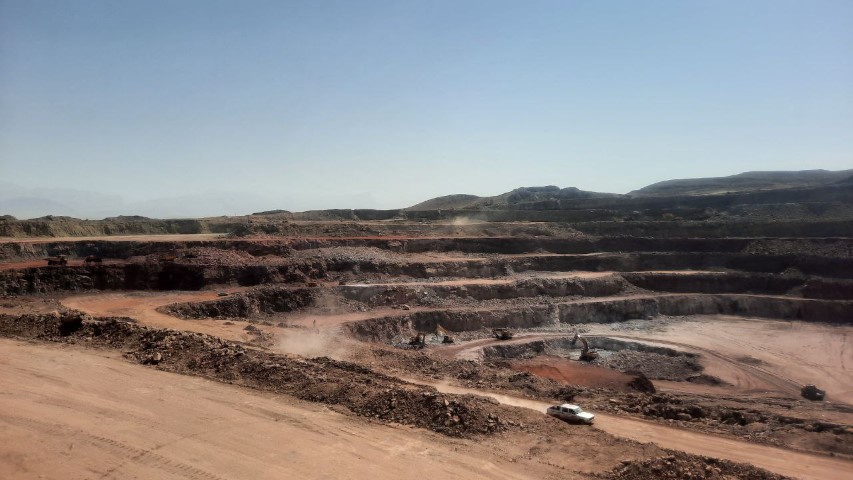Open Pit Mining

Open-Pit Mining
Definition and General Concept: Open-pit mining refers to a method of extracting minerals from the earth’s surface through a large, open excavation. This method is one of the oldest and most common techniques used for accessing shallow, near-surface mineral deposits. It is employed for extracting various minerals, including iron ore, copper, coal, diamonds, gold, and many others.
History of Open-Pit Mining: Open-pit mining dates back to ancient times when people used simple tools to mine in open excavations, often targeting precious stones and valuable metals like gold and silver. A famous historical example is the gold mines in ancient Egypt, where Egyptians extracted gold using this method. In modern times, with technological advancements and improvements in heavy machinery, open-pit mining has become one of the primary methods of mineral extraction. This method, using blasting, drilling, and heavy machinery like bulldozers and loaders, facilitates the rapid and efficient extraction of minerals from the earth’s surface.
Stages and Processes of Open-Pit Mining
1-Initial Exploration and Evaluation
-Geological Studies: The first step in any mining project is conducting geological studies of the area. These studies include land mapping, exploratory drilling, rock sampling, and chemical testing to determine the type and concentration of minerals present.
-Economic Analysis: After identifying mineral deposits, economic analyses are conducted to assess the profitability of mining the minerals. These analyses include evaluating extraction, transportation, processing, and sales costs.
-Environmental Assessment: Before beginning extraction operations, the environmental impact of the project must be assessed. This assessment includes evaluating potential impacts on wildlife, groundwater, soil, and air.
2-Mine Design and Planning
-Pit Design: After the initial evaluations, the pit design is developed. This design includes specifying the dimensions, slope angles, depth, and extraction stages for the minerals.
-Transportation Planning: One of the most critical aspects of mine design is planning the transportation of minerals and waste. This involves determining transport routes, types of transportation machinery, and the operation schedule.
-Waste Management Planning: Waste materials, which do not contain minerals, must be removed from the mine. Proper planning for waste management is essential to minimize costs and environmental impacts.
3-Surface Layer Removal
-Drilling and Blasting: Following the design phase, drilling and blasting operations commence. Drilling creates initial holes for inserting explosives. Afterward, blasting is performed to break large rocks into smaller pieces.
-Material Collection and Transport: After blasting, the broken materials are collected by bulldozers and loaders and transported to designated locations. These materials are either sent directly to processing plants or stored.
4-Mineral Extraction
-Extraction Techniques: Mineral extraction in open-pit mines is conducted using various methods, such as rotary drilling, percussion drilling, or using loaders and shovels. The method chosen depends on the type of mineral, the hardness of the rocks, and the mine’s dimensions.
-Transporting Minerals to Processing Plants: After extraction, minerals are transported to processing plants for purification and processing. In this process, minerals are separated from waste materials using chemical and physical methods.
5-Land Recovery and Rehabilitation
-Mine Rehabilitation: After mining operations are completed, the land must be rehabilitated. This stage includes filling in extraction pits, covering them with soil, and planting native vegetation to restore the land to its original or better condition.
-Environmental Monitoring: Following rehabilitation, environmental monitoring is conducted to ensure that negative environmental impacts are minimized and the area has returned to its natural state.
Technologies Used in Open-Pit Mining Today, advanced technologies play a crucial role in increasing productivity, reducing costs, and minimizing the environmental impacts of open-pit mining. Some of these technologies include:
-Heavy and Autonomous Machinery: Equipment like loaders, bulldozers, shovels, and autonomous trucks (driverless) help reduce costs and increase safety.
-Mining Management Software: These software solutions are used for planning, scheduling, and managing mining operations. By using these tools, mines can improve productivity and reduce costs.
-Monitoring and Remote Sensing Technologies: These technologies help mines manage their mineral resources more accurately and effectively while controlling environmental impacts.
-Use of Robots and Drones: Robots are employed for hazardous and precise tasks such as deep drilling and equipment inspections, while drones are used for mapping and monitoring mining operations.
Advantages of Open-Pit Mining
-High Productivity: Open-pit mines generally have higher productivity compared to underground mines, as extraction operations are conducted directly from the earth’s surface without the need for tunnels and underground structures.
-Lower Costs: Since there is no need to construct tunnels and complex infrastructure, the extraction costs in open-pit mines are usually lower than in underground mines.
-Easier Access: Minerals in open-pit mines are more easily accessible, allowing for quicker and more efficient extraction operations.
-Greater Safety: Due to the absence of confined spaces and the risks associated with tunnel collapses, open-pit mines offer greater safety, reducing the risk of injury to workers.
Disadvantages of Open-Pit Mining
-Environmental Impacts: Open-pit mining can cause extensive damage to natural habitats, water pollution, soil degradation, and the destruction of natural landscapes.
-Soil and Vegetation Destruction: Extraction operations in open-pit mines can lead to the loss of surface soil and vegetation, which can negatively impact the region’s ecosystem.
-Noise and Dust Pollution: Mining operations, especially drilling and blasting, generate noise and dust pollution, which can negatively affect the health of local communities.
-Depth Extraction Limitations: In open-pit mines, due to economic and technical challenges, extracting minerals from great depths is limited. As the mine’s depth increases, extraction costs rise sharply, potentially making mining operations uneconomical.
